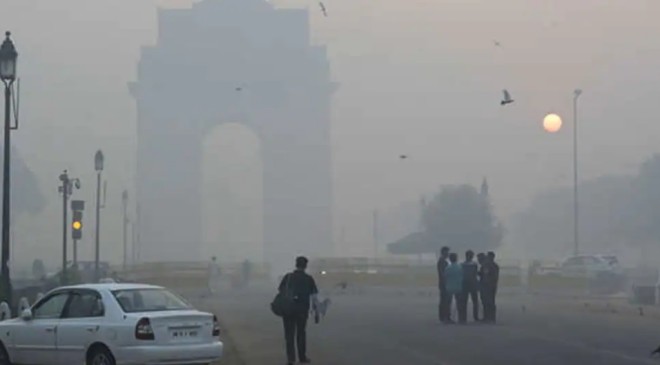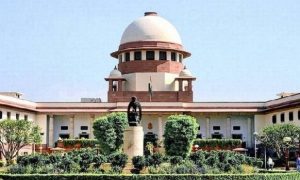A thin blanket of smog continued to envelop the National Capital Region (NCR), including Delhi, Noida, Ghaziabad, and Gurugram.
Delhi’s air quality showed a slight improvement on Thursday, though it remained in “very poor” category. A thin blanket of smog continued to envelop the National Capital Region (NCR), including Delhi, Noida, Ghaziabad, and Gurugram.
Air Quality Index Trends
At 7 a.m., Delhi’s overall Air Quality Index (AQI) was recorded at 379, placing it in the “very poor” category. However, several air monitoring stations across the city reported AQI levels above 400, falling into the “severe” category. Jahangirpuri and Wazirpur recorded the highest levels at 437, followed by Bawana at 419 and Ashok Vihar and Mundka at 416, according to the Central Pollution Control Board (CPCB).
The Indian Meteorological Department (IMD) forecasted temperatures for Thursday to range from a minimum of 11°C to a maximum of 26°C. Despite slight improvements in some areas, a dense layer of smog continued to shroud the national capital, reducing visibility and casting a gray haze over the city.
Revised GRAP Guidelines for NCR
In response to the escalating pollution levels, the Commission for Air Quality Management (CAQM) revised the Graded Response Action Plan (GRAP) on Wednesday. Key mandates under Stages 3 and 4 include:
- Mandatory School Closures: All schools in Delhi, Gurugram, Faridabad, Ghaziabad, and Gautam Buddh Nagar must transition to online learning.
- Staggered Office Timings: Public offices and municipal bodies in Delhi and certain NCR districts are required to implement staggered schedules.
Previously, these measures were discretionary, but the revised guidelines now make them obligatory for specified regions.
Supreme Court Intervention
Earlier this week, the Supreme Court criticised the CAQM for delays in implementing stringent measures under Stages 3 and 4 of the GRAP. The Court ordered immediate action, particularly emphasising the closure of schools to protect children from severe pollution.
Read More: RSS ‘Rebrands’ Hyderabad As Bhagyanagar, Hosts Cultural Festival To Reclaim ‘Unadulterated Heritage’
Persistent Pollution Levels
Delhi’s air quality has remained in the severe category since Sunday. On Monday and Tuesday, it briefly crossed into the “severe plus” category, with AQI readings exceeding 450.
With dangerously high pollution levels, experts and authorities urge stricter enforcement of anti-pollution measures, enhanced public awareness, and sustainable urban practices to combat the ongoing crisis.
The situation underscores the urgent need for collaborative efforts between the government, judiciary, and public to ensure a healthier environment for NCR residents.
Delhi Govt announces 50% of its employees will work from home
Meanwhile, the Delhi government issued an order on November 20, 2024, mandating a 50% staff reduction in government offices and the Municipal Corporation of Delhi. Half of the employees will work remotely, while the remaining will report to offices. This move aims to maintain essential public services while reducing environmental and health risks amid severe air pollution.
Administrative Secretaries and Heads of Departments under the Government of the National Capital Territory of Delhi (GNCTD) will oversee operations, summoning staff as needed to ensure the uninterrupted delivery of critical services. Key services such as healthcare, fire services, prisons, public transport, electricity, water, sanitation, and municipal operations are exempt from the order to ensure public welfare and functionality.
The directive seeks to balance operational efficiency and public health concerns during a period of heightened environmental challenges. It highlights the need for adaptive measures to ensure safety while sustaining essential government services.





































